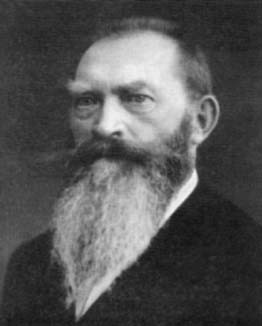


 تاريخ الرياضيات
تاريخ الرياضيات
 الرياضيات في الحضارات المختلفة
الرياضيات في الحضارات المختلفة 
 الرياضيات المتقطعة
الرياضيات المتقطعة
 الجبر
الجبر
 الهندسة
الهندسة 
 المعادلات التفاضلية و التكاملية
المعادلات التفاضلية و التكاملية 
 التحليل
التحليل
 علماء الرياضيات
علماء الرياضيات |
Read More
Date: 6-4-2017
Date: 6-4-2017
Date: 9-4-2017
|
Died: 16 September 1931 in Copenhagen, Denmark

Niels Nielsen's father was a farmer and the family were quite poor. Perhaps as a consequence of his background, he began his time at high school intending to study practical subjects. He had decided to enter the Polytechnic Institute to begin these studies but while still at school developed a love of pure mathematics so decided that it would be more appropriate for him to study at university.
Nielsen entered the University of Copenhagen in 1885 and graduated from there in 1891. In fact he had begun to teach in secondary schools in 1887 while still working for his degree at the University of Copenhagen and he continued teaching while working for his doctorate which was awarded in 1895. He gave preparatory courses for the Polytechnic Institute beginning in 1900 and from 1903 until 1906 he was on the University Inspectorate for Secondary Schools. Nielsen became a university teacher in 1905 and he succeeded Petersen as professor at Copenhagen in 1909.
He wrote on special functions, particularly the gamma function, building on theory introduced by Jensen. Early papers which he published while still teaching in schools include: Sur le produit de deux fonctions cylindriques (1899); Sur la développement du zéro en séries de fonctions cylindriques (1899); Recherches sur les séries de fonctions cylindriques dues à C Neumann et W Kapteyn (1901); Note sur la convergence d'une série neumannienne de fonctions cylindriques (1901); and Recherches sur les séries de factorielles (1902).
In 1904 he published rather a large number of works including the papers Sur une intégrale définie; Note sur les séries de fonctions bernoulliennes; and Les séries de factorielles et les opérations fondamentales. In the same year he published the widely used text Handbuch der Theorie der Zylinderfunktionen which gave formulas for partial derivatives of Bessel functions with respect to order at integral values. Two years later he published another widely used text Handbuch der Theorie der Gammafunktion (Teubner, Leipzig, 1906) in which he brought together work which he had completed over the preceeding twenty years. It was the first major work devoted to the study of the gamma function since a treatise by Legendre. In the same year he published Theorie des Integrallogarithmus und verwandter Transzendenten (Teubner, Leipzig, 1906). These two texts were reprinted by the Chelsea Publishing Company of New York in 1965, bound into a single volume.
In the couple of years before World War I, Nielsen published papers such as Recherches sur le développement d'une fonction analytique en série de fonctions hypergéometriques (1913) and Recherches sur les résidus quadratiques et sur les quotients de Fermat (1914). During the war, however, in 1917, he suffered a breakdown from which he never fully recovered. He did, however, continue to produce quality mathematics books. He turned to number theory and studied Bernoulli numbers in Traité élémentaire des nombres de Bernoulli (Gauthier-Villars, Paris, 1923) and Fermat's equation writing good textbooks on these topics. His textbooks, however, contained little original mathematics but they were well written texts with much skill in organising the material.
He also wrote two books on the history of Danish mathematics and two books on the history of French mathematics [1]:-
... he occupied himself primarily with accounts of personalities and the historical development of specific problems.
For example he wrote the two volume text on Danish mathematics, the first volume covering the years 1528 to 1800, and the second volume covering the yeras 1801 to 1908. It was published in 1910. Géomètres français sous la révolution, containing biographies of 76 mathematicians was published in 1929 (and has proved very useful to the authors of this archive) and Géomètres français du dix-huitième siècle, containing biographies of 153 mathematicians, was published after Nielsen's death.
Oettel writes in [1]:-
He was a master in the treatment of unmethodical calculations and came up with a multitude of particular points. He playfully conceived new things that were not always in a complete form, and he was a significant influence on his students.
Articles:



|
|
|
|
التوتر والسرطان.. علماء يحذرون من "صلة خطيرة"
|
|
|
|
|
|
|
مرآة السيارة: مدى دقة عكسها للصورة الصحيحة
|
|
|
|
|
|
|
نحو شراكة وطنية متكاملة.. الأمين العام للعتبة الحسينية يبحث مع وكيل وزارة الخارجية آفاق التعاون المؤسسي
|
|
|